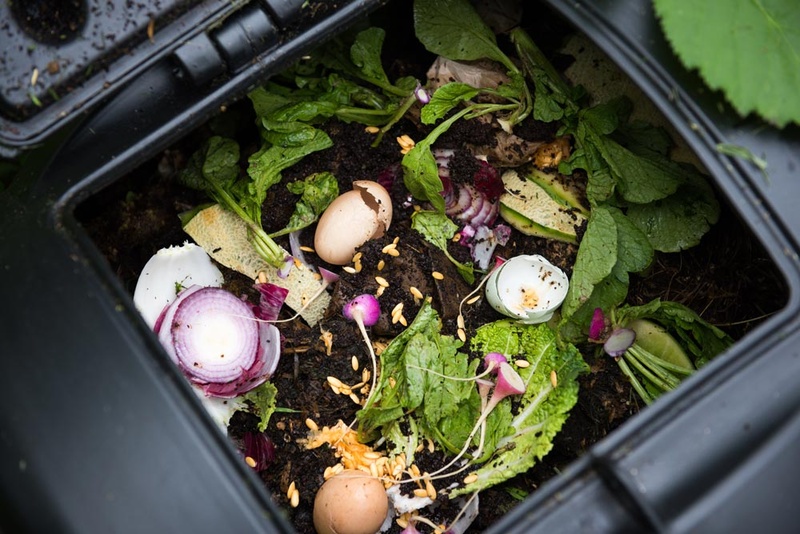
Make Your Own Compost
Put your grass clippings, leaves, and food scraps to work. Combine them in a compost pile or bin and mix with oxygen and water to eventually yield a nutrient-rich humus that can be utilized in your landscape as a soil amendment or fertilizer.
Sometimes taking up a new practice or project can be intimidating, especially when it comes to landscaping. But if you’ve been thinking about composting at home and just need some help getting started, we’ve got you covered.
Composting is a great way to simultaneously reduce waste and nourish your landscape. A variety of food scraps and household items can be added to compost, and with the right ratio of ingredients, simple maintenance, and patience, you’ll end up with a nutrient-rich humus that can be used as a soil amendment or organic fertilizer for your plants.
Where to Begin
The first thing to do is determine how and where you’re going to start your compost. How much space do you have? If you have over an acre of land, you might go with the traditional outdoor compost pile. If you have a smaller space, consider buying or building a compost bin.
Starting a Compost Pile
If you have the space to keep an outdoor compost pile, begin with a few inches of twigs or straw over bare earth, creating a base that will promote drainage and help with aeration. Add your compost materials, alternating between moist and dry items. Make sure to add an ‘activator’ to your mix, like grass clippings or chicken manure. Activators get the composting process started and speed it up.
Keep your compost pile moist by either watering it or allowing the rain to do it for you. You don’t want it soaking wet, though, so keep the pile covered most of the time with plastic or wood. Covering the compost will also help it retain moisture and heat.
Turn the compost pile every few weeks with a shovel or pitchfork in order to aerate the pile and keep the composting process moving. After the initial creation of your compost pile, add new materials by mixing them in rather than layering them on top.
Building a Compost Bin
If you live on less than an acre, a compost bin is your best bet: it will keep your compost contained, saving space and sparing next-door neighbors any unpleasant odors. You can use a sturdy garbage bin to make your own compost bin.
Drill holes into the bottom of the bin, about 15 centimeters apart. Add your materials and stir them occasionally to aerate the compost and speed up the process.
What Goes Into Compost?
Compost needs carbon, nitrogen, oxygen, and water. By watering and turning your compost, you’re supplying the necessary water and oxygen. The carbon and nitrogen come from the materials that you add.
Brown and dry materials like leaves, straw, and cardboard tend to be rich in carbon. They keep compost light and help provide the energy required for decomposition. Green and wet materials like grass clippings and food scraps are high in nitrogen and necessary to help oxidize the carbon. You should have twice as much carbon as nitrogen in your compost, in other words two-thirds brown and one-third green materials.
Follow these simple guidelines and you’ll be seeing the fruits of your labor in no time: a fertilizer and soil additive that comes right from your lawn and kitchen leftovers!
#compost #floralawn #landscape #lawncare #fertilizer